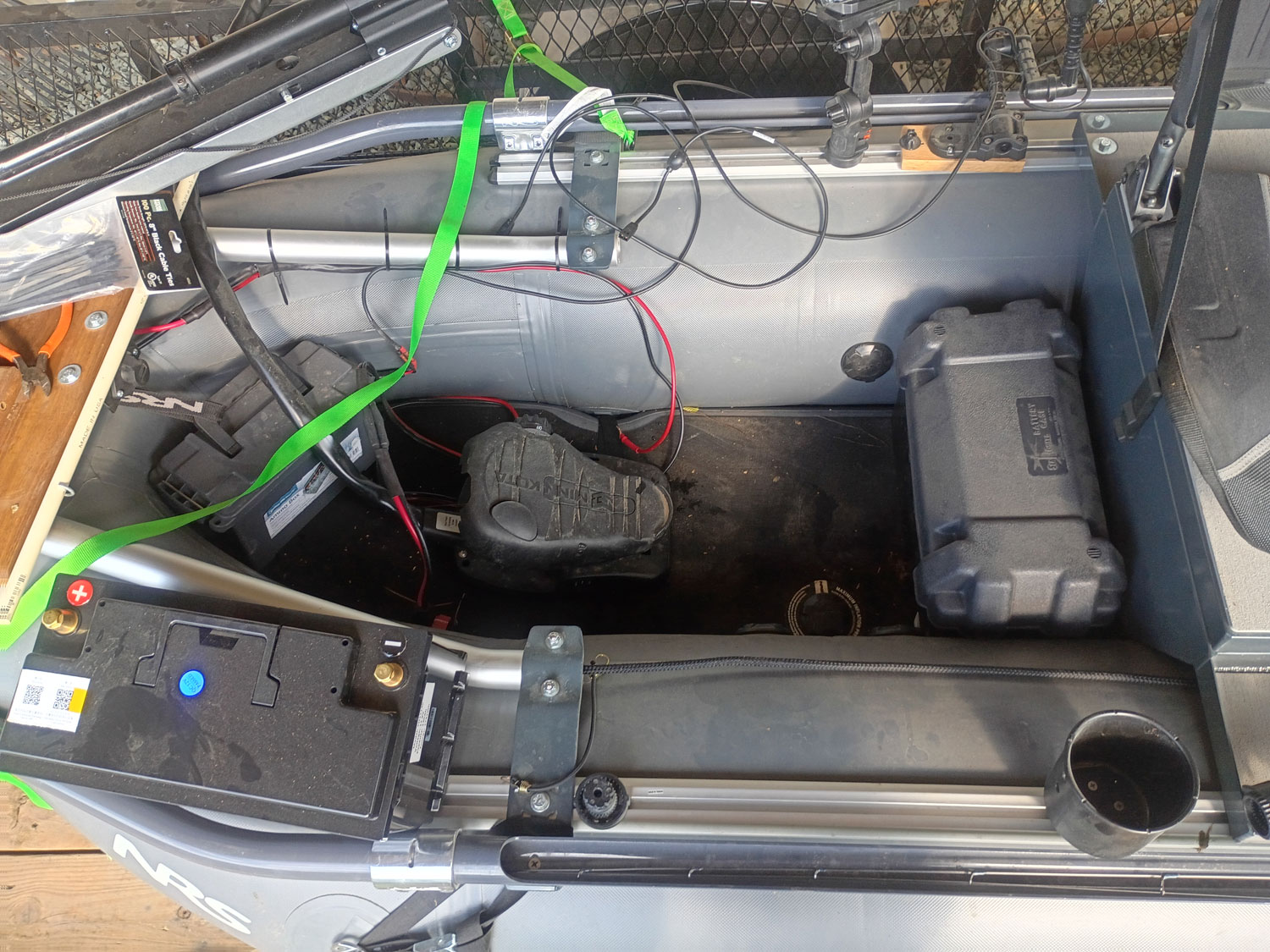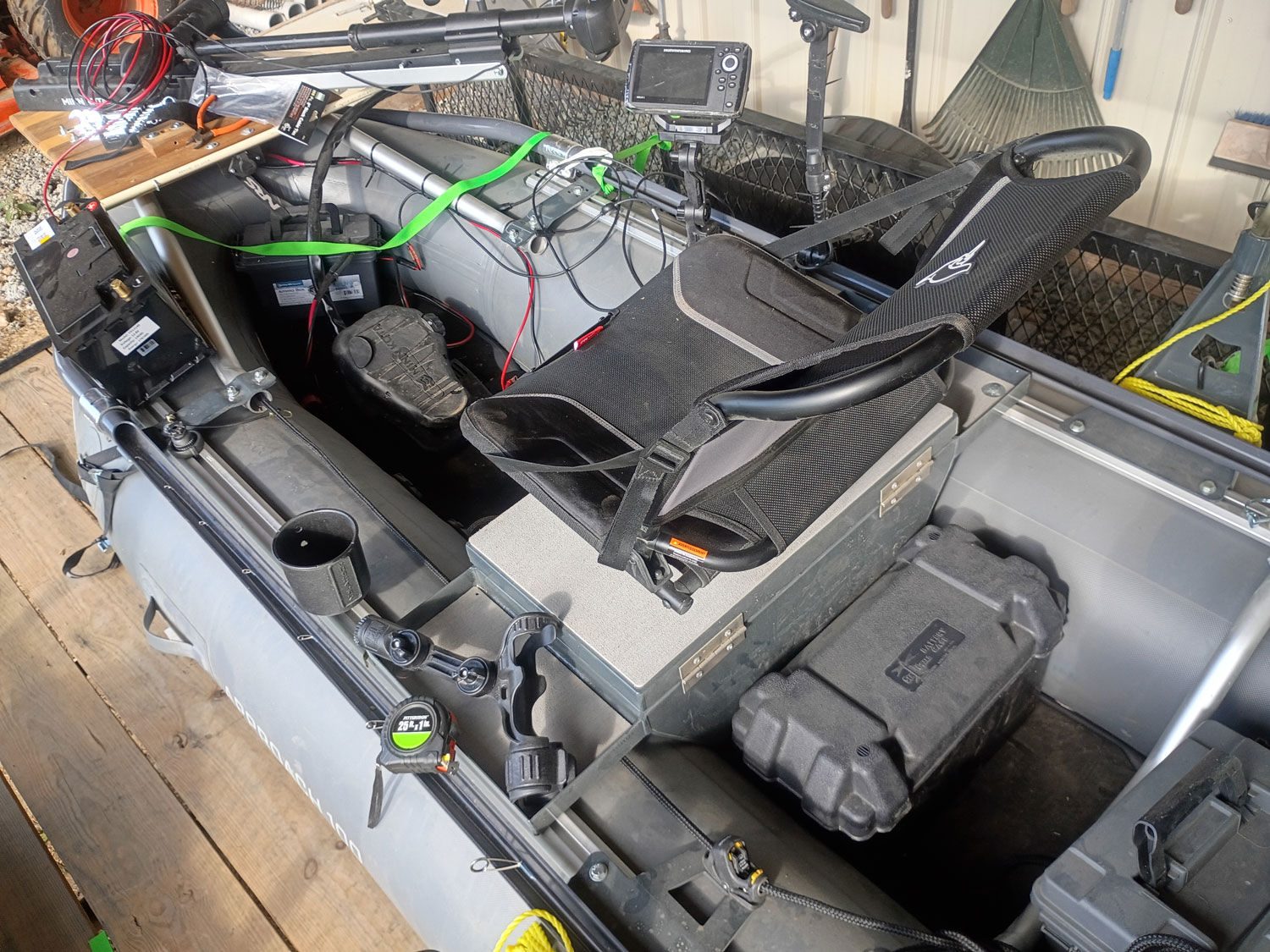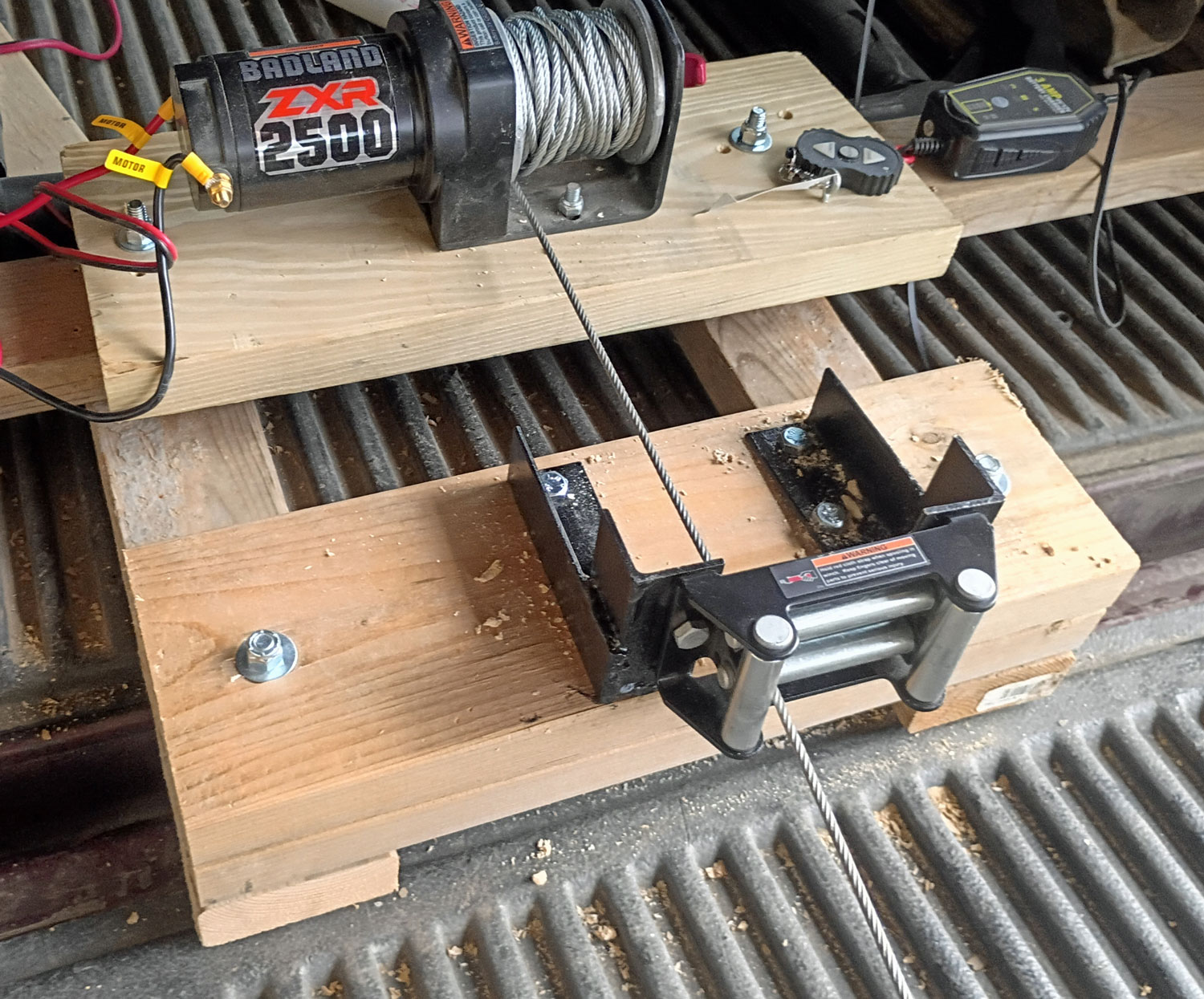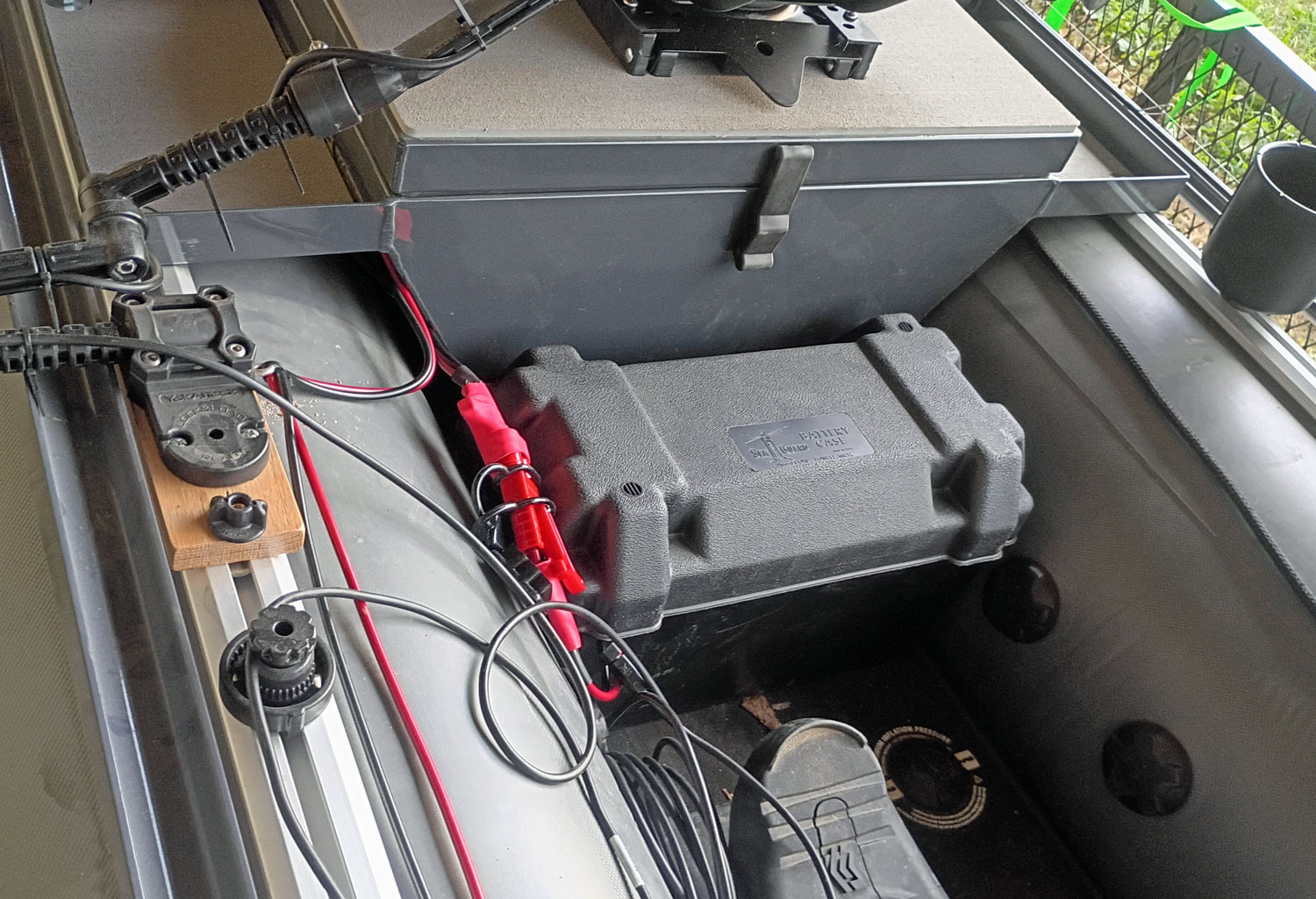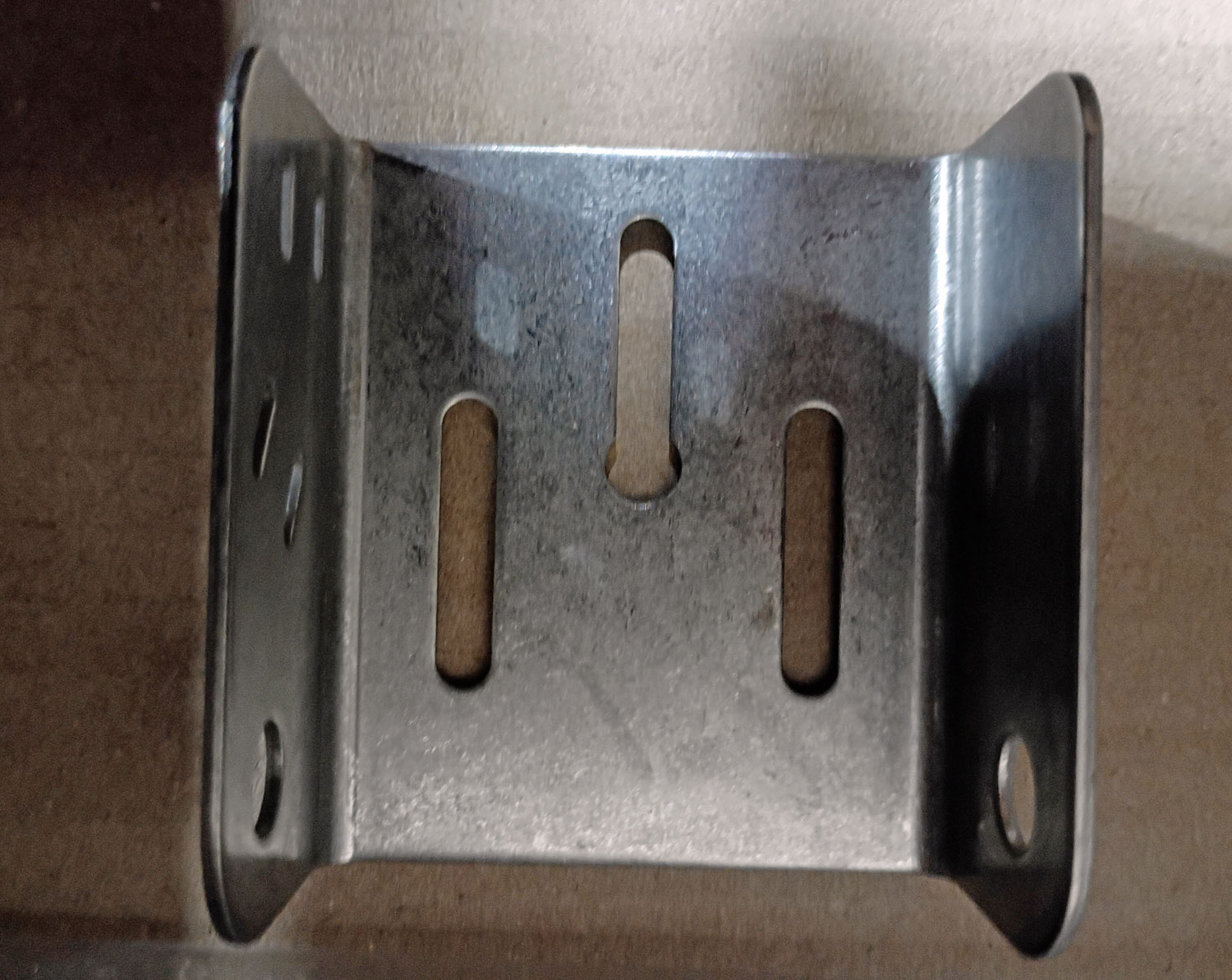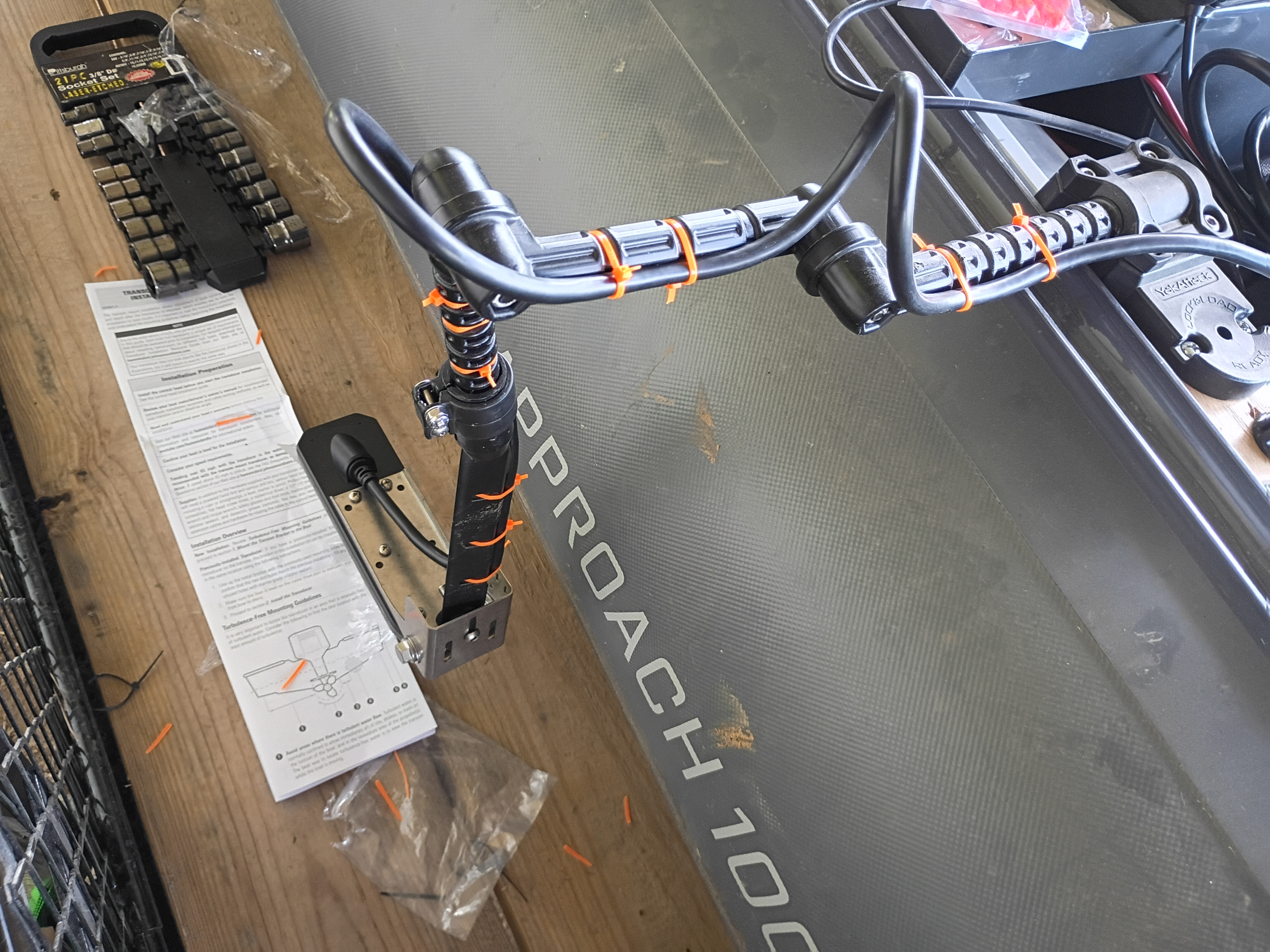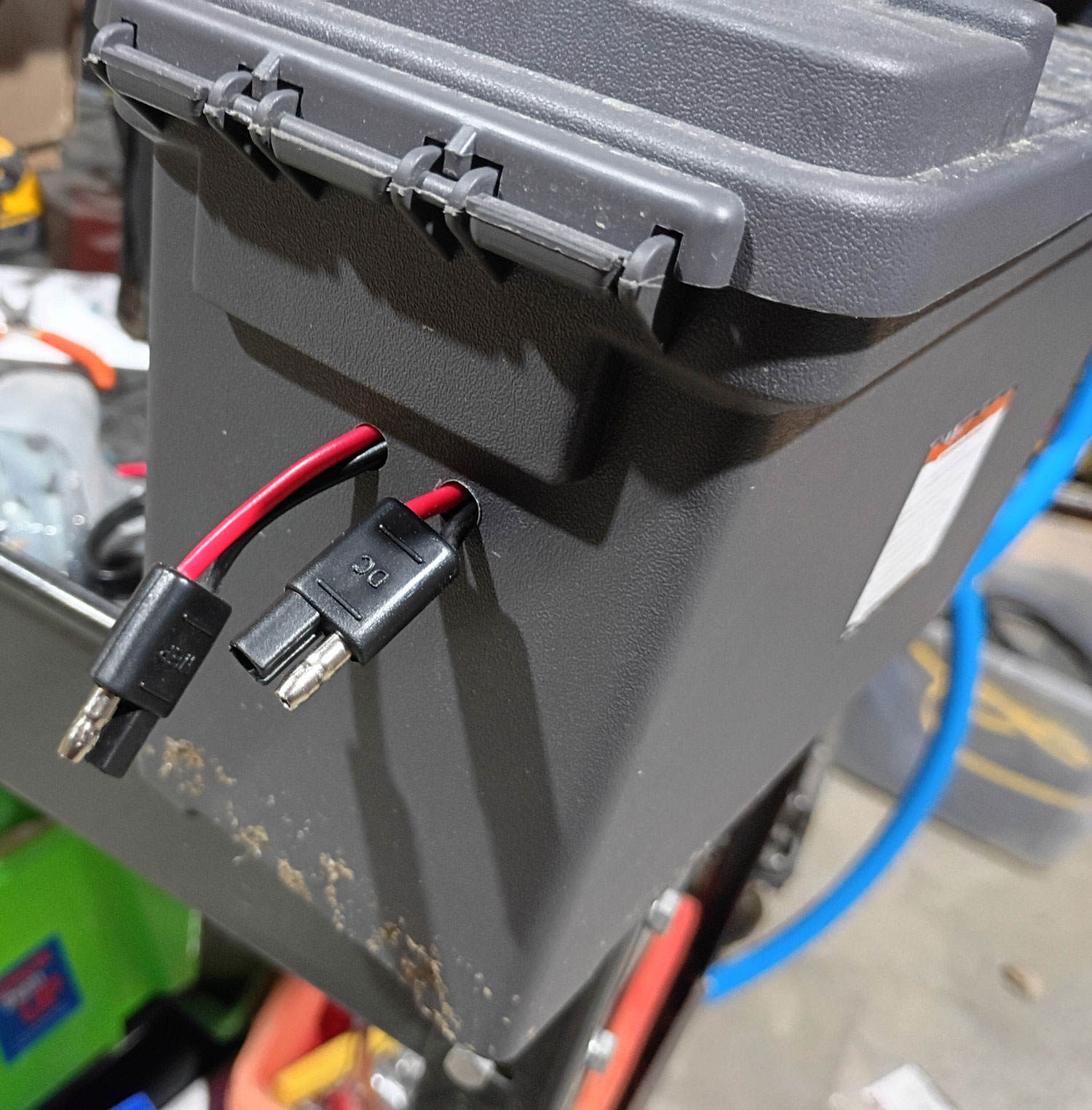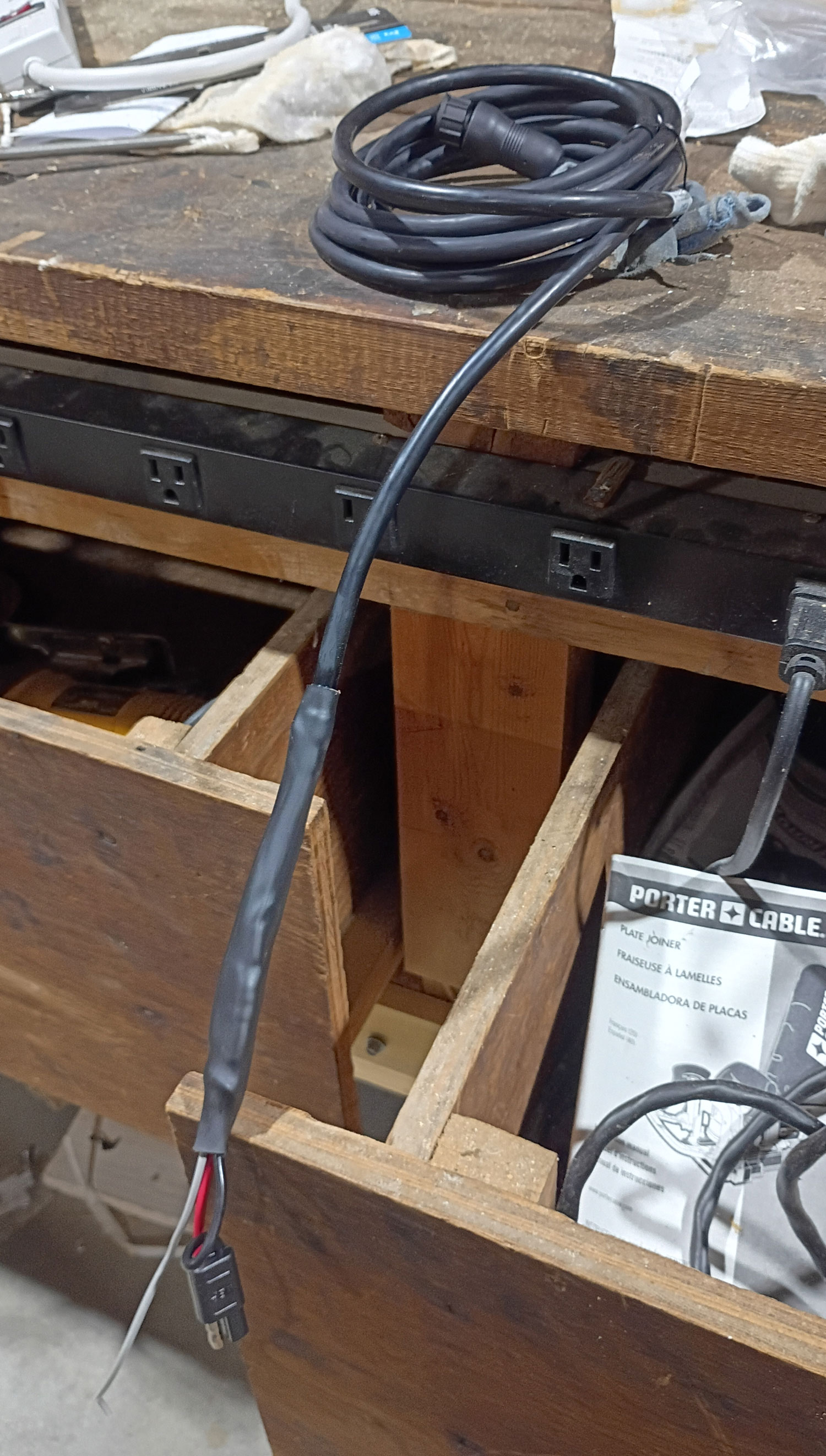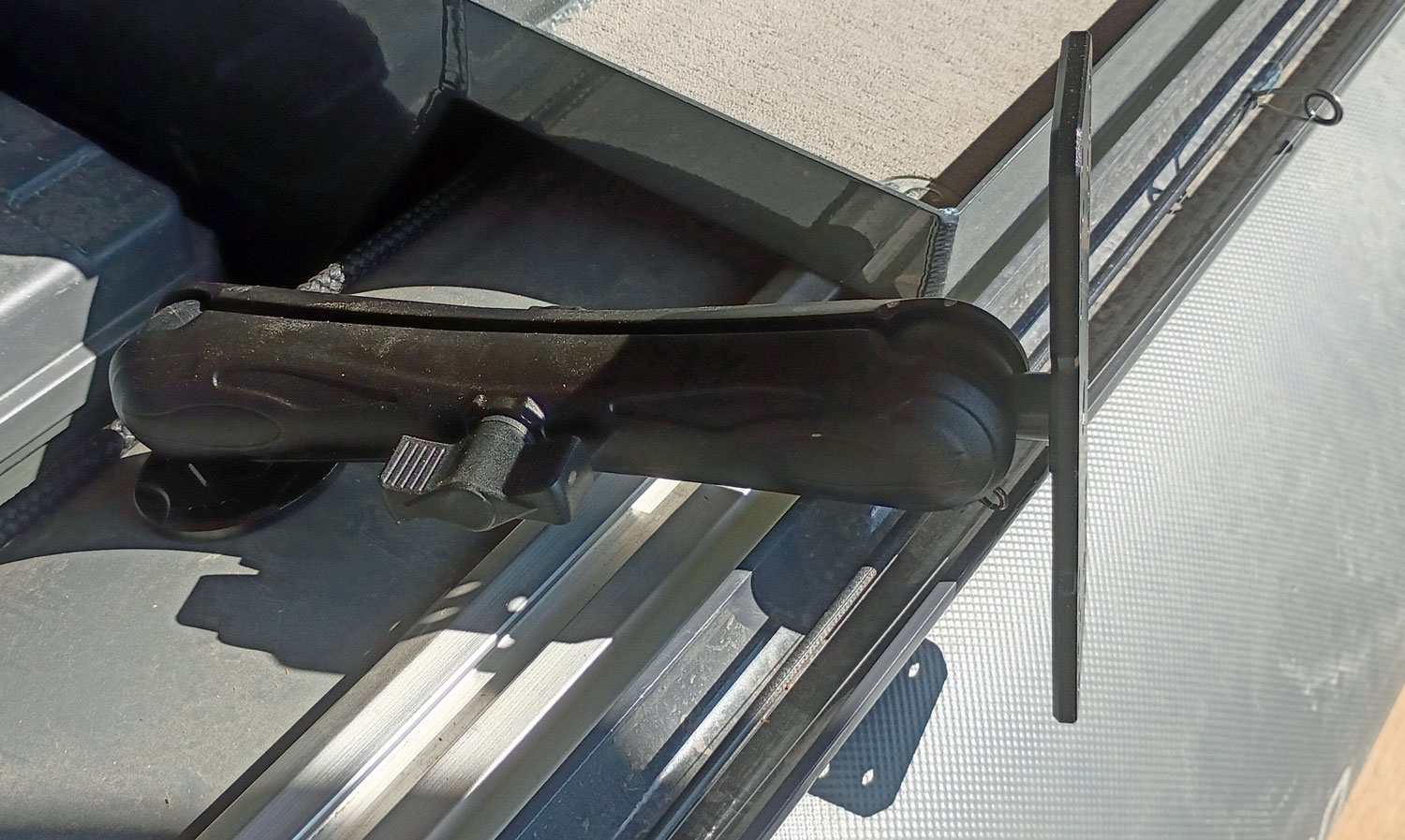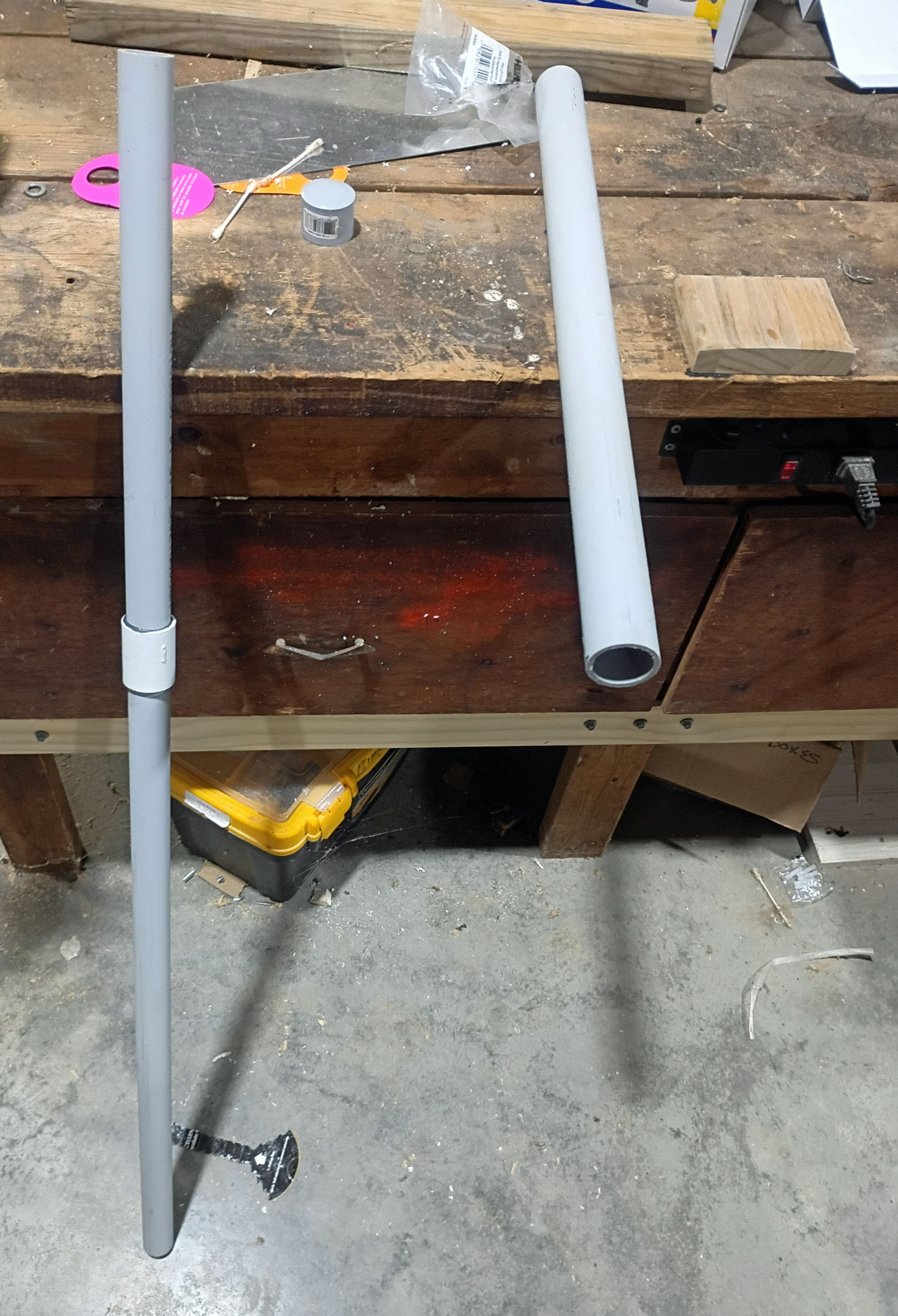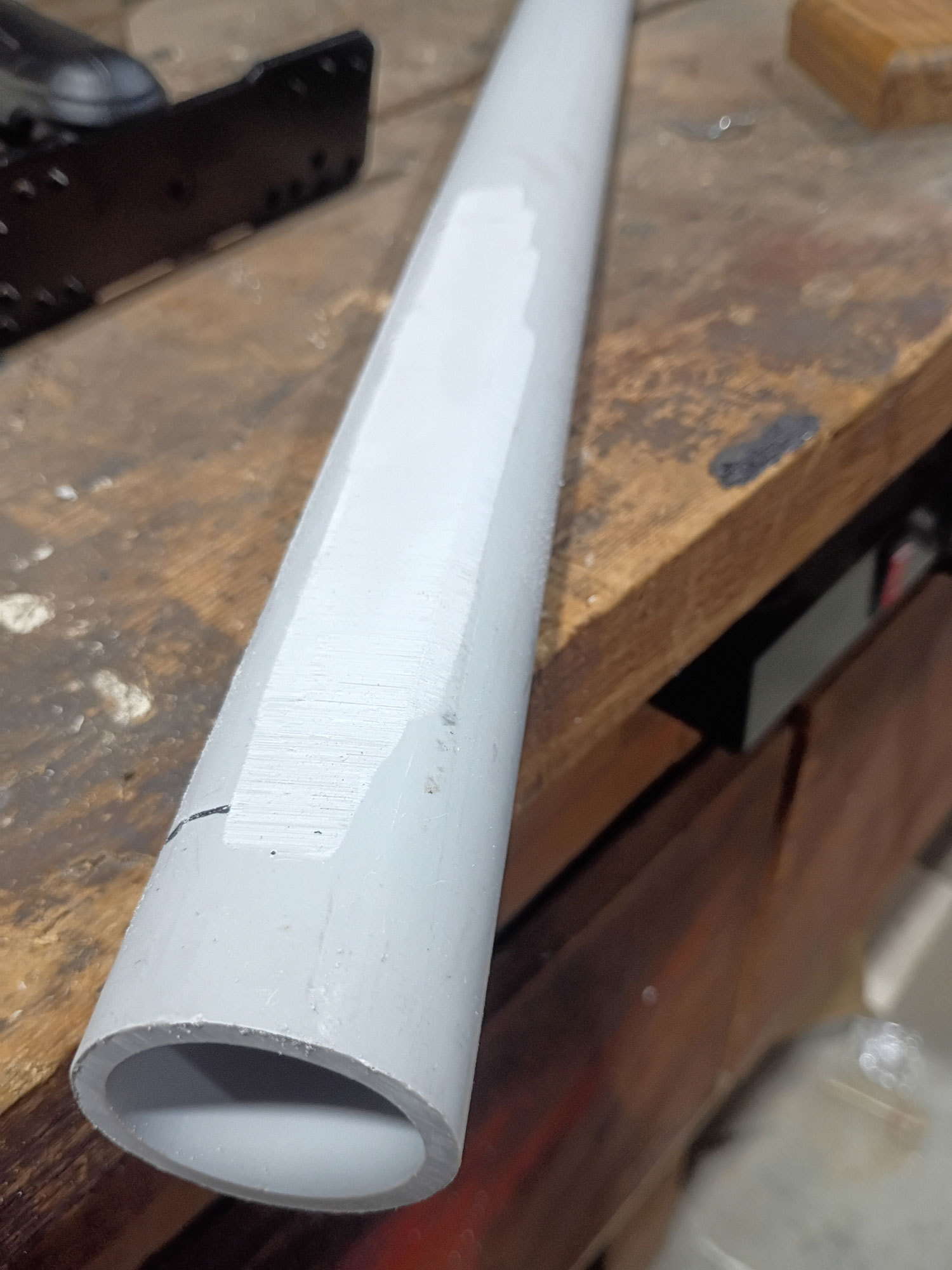yoderjac
Well-Known Member
Yesterday wore me out, so I'm moving pretty slowly today. Here is the picture of the truck bed winch board I was referring to:
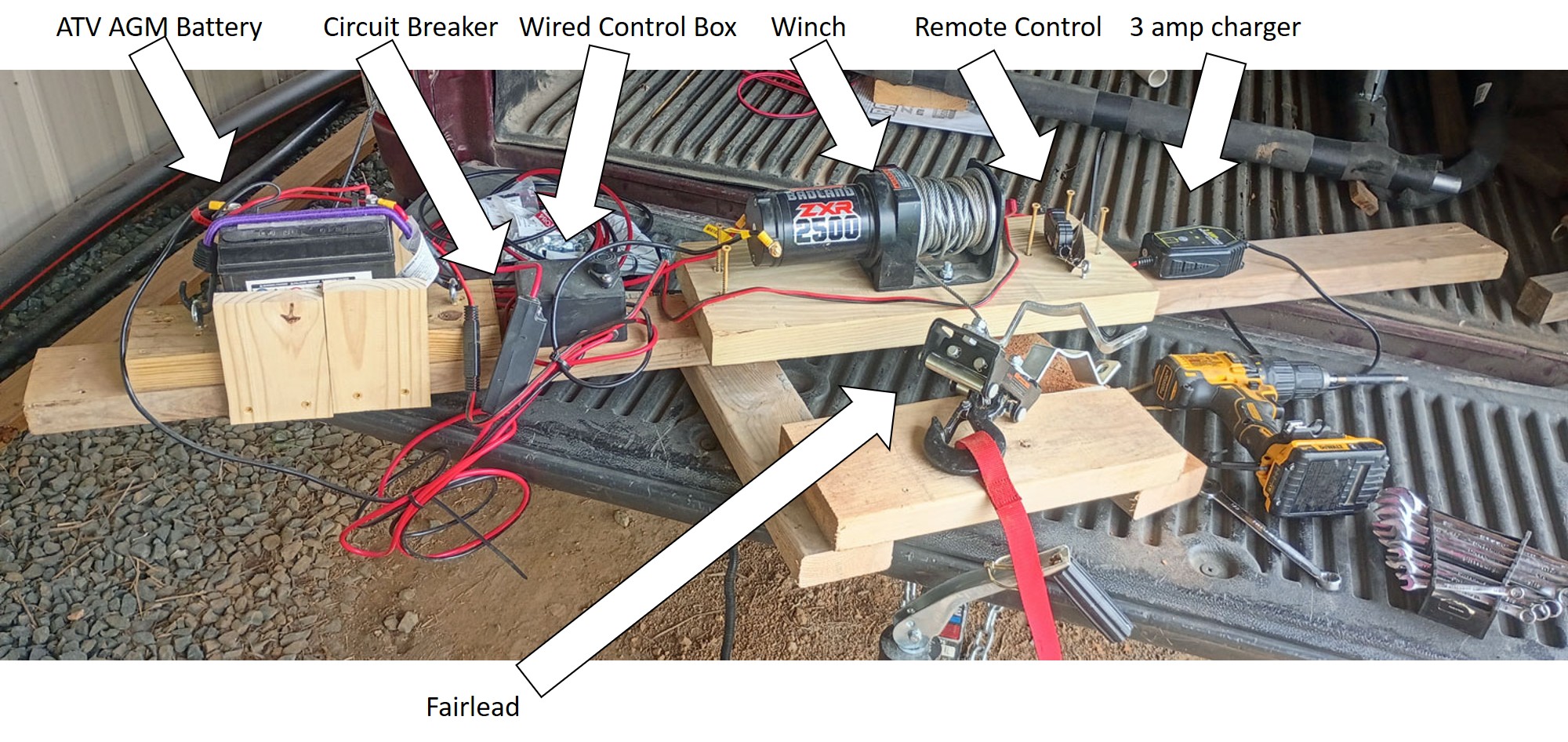
It is basically a 2x4 sized to wedge into the bed of the truck supported at the ends. On the left you see the ATV AGM Battery that I boxed in so I can move the board easily. Next to it is the circuit breaker and wired control box that comes with the winch. I don't really use the wired controller, but I keep it in the truck just in case the remote fails. The winch was previously screwed into a piece of 2x8 with deck screws. There used to be a single 2x6 directly under the winch sticking out on to the tailgate a bit. The winch was mounted on it with those silver brackets I dug up. You can see that when we mounted it on the tree with the cable from the winch going down through the fairlead and then taking a sharp turn to the boat, that the fairlead was not setup for that and the brackets holding it bent. The remote control is clipped to an eyelet and a 3 amp charger is secured to the board.
It worked great when used as designed in the truck bed, but failed when we tried to tie it to a tree as a make-shift winch to winch the boats up and down a steep bank. After the fairlead brackets broke, the single 2x6 under the winch had the decking screws pull out. Again, it was not designed to be used in that orientation.
You can see in the picture how I intend to modify it. I'm still not going to change the design to let it do double duty and winch boats up and down the steep bank. We can set up a different winch for that. I do plan to beef it up and use carriage bolts in place of the decking screws. Instead of a single 2x6 coming out on the tail gate, I plan to use two 2x4s and run a couple 2x6s between them. I still have not figured out how to attach the fairlead.

It is basically a 2x4 sized to wedge into the bed of the truck supported at the ends. On the left you see the ATV AGM Battery that I boxed in so I can move the board easily. Next to it is the circuit breaker and wired control box that comes with the winch. I don't really use the wired controller, but I keep it in the truck just in case the remote fails. The winch was previously screwed into a piece of 2x8 with deck screws. There used to be a single 2x6 directly under the winch sticking out on to the tailgate a bit. The winch was mounted on it with those silver brackets I dug up. You can see that when we mounted it on the tree with the cable from the winch going down through the fairlead and then taking a sharp turn to the boat, that the fairlead was not setup for that and the brackets holding it bent. The remote control is clipped to an eyelet and a 3 amp charger is secured to the board.
It worked great when used as designed in the truck bed, but failed when we tried to tie it to a tree as a make-shift winch to winch the boats up and down a steep bank. After the fairlead brackets broke, the single 2x6 under the winch had the decking screws pull out. Again, it was not designed to be used in that orientation.
You can see in the picture how I intend to modify it. I'm still not going to change the design to let it do double duty and winch boats up and down the steep bank. We can set up a different winch for that. I do plan to beef it up and use carriage bolts in place of the decking screws. Instead of a single 2x6 coming out on the tail gate, I plan to use two 2x4s and run a couple 2x6s between them. I still have not figured out how to attach the fairlead.


